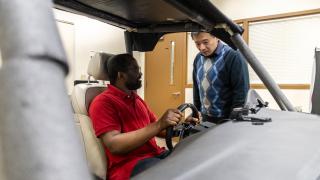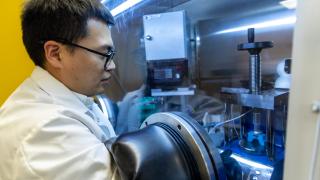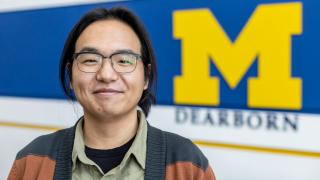As a UM-Dearborn undergrad, Kristen Dage asked Astronomy Associate Professor Will Clarkson if there were any openings for research work. After receiving a list, Dage chose a project where she would measure the effect that a neutron star — a compact stellar remnant with extreme properties like gravitational pull — has on the movement and appearance of a relatively normal stellar companion near it.
“This particular neutron star has about the same mass as the sun but it’s about the size of Dearborn. If it were any more compact, we’d get a black hole,” Clarkson says. “There’s a lot of really compact exotic nuclear material. We wanted to see how the system works.”
That was a decade ago. Dage graduated from UM-Dearborn in 2014. But her observation and data collection with Clarkson is ongoing — as is Dage’s interest in astronomy, astrophysics, neutron stars and black holes. Dage earned her Ph.D. in Astronomy and Astrophysics from Michigan State University in 2020 — her acceptance letter is hanging in Clarkson’s office. She recently completed an independent fellowship at McGill University in Montréal.
Now she’s working with NASA. Dage was named one of the 24 people internationally that NASA selected for its prestigious annual postdoctoral NASA Hubble Fellowship Program.
As a 2023 NASA Einstein Fellow, a subset of the award, Dage is designing research around the question, “How does the universe work?” Her study will explore how compact objects evolve in dense stellar environments. Her work will enable, for the first time, the creation of a catalog of putative — or presumed to exist — intermediate mass black holes in young star clusters.
“Neutron stars hold so much information. They are a key to unlocking the universe’s secrets,” says Dage, noting that neutron stars are rich laboratories to understand physics, including gravitational physics, nuclear and particle physics, and plasma astrophysics. Dage says since the processes that happen in a neutron star cannot be replicated in labs on Earth, researchers study them where they are.
The NASA fellowships, which are limited to individuals only a few years post-doc, provide three years of independent research support. Because the applicant needs to be sponsored by an institution, only top candidates are put forward.
For her NASA fellowship, Dage will work out of Wayne State University. She says this will give her the opportunity to stop in at UM-Dearborn’s campus and see some of her favorite people. She says doors were always open to her as a student and that continues today.
And, in one of those offices, there are now two papers hanging up with her name on them. After she read her NASA acceptance letter, she sent it over to her mentor. “I wrote, ‘Print this and put it next to the other letter’ to Will,” she says. “I am where I am today because of Will. I feel very lucky to have gone to UM-Dearborn. I met wonderful people who opened doors. Those opened doors made opportunities like this happen
for me.”
###
Story by Sarah Tuxbury



